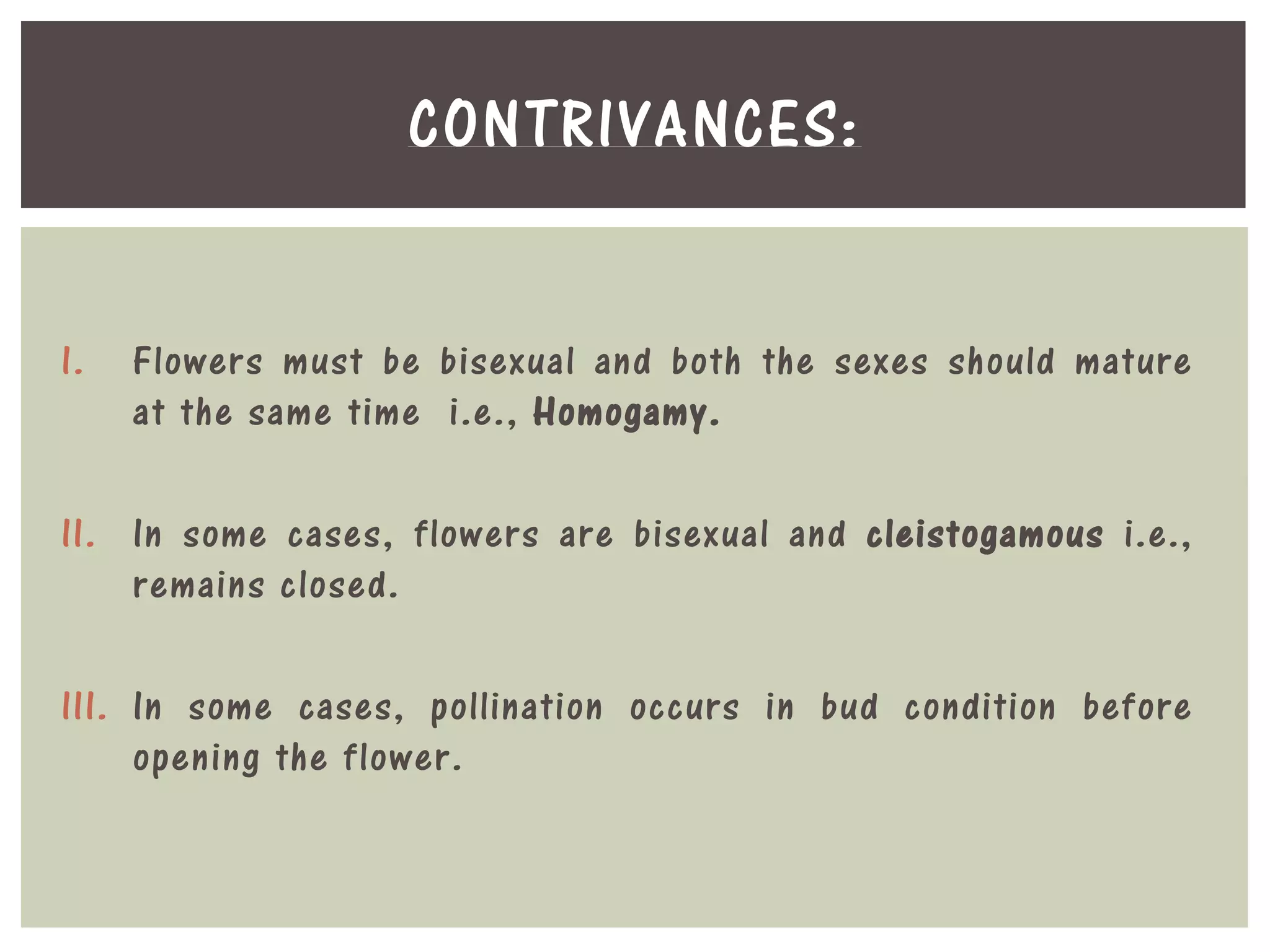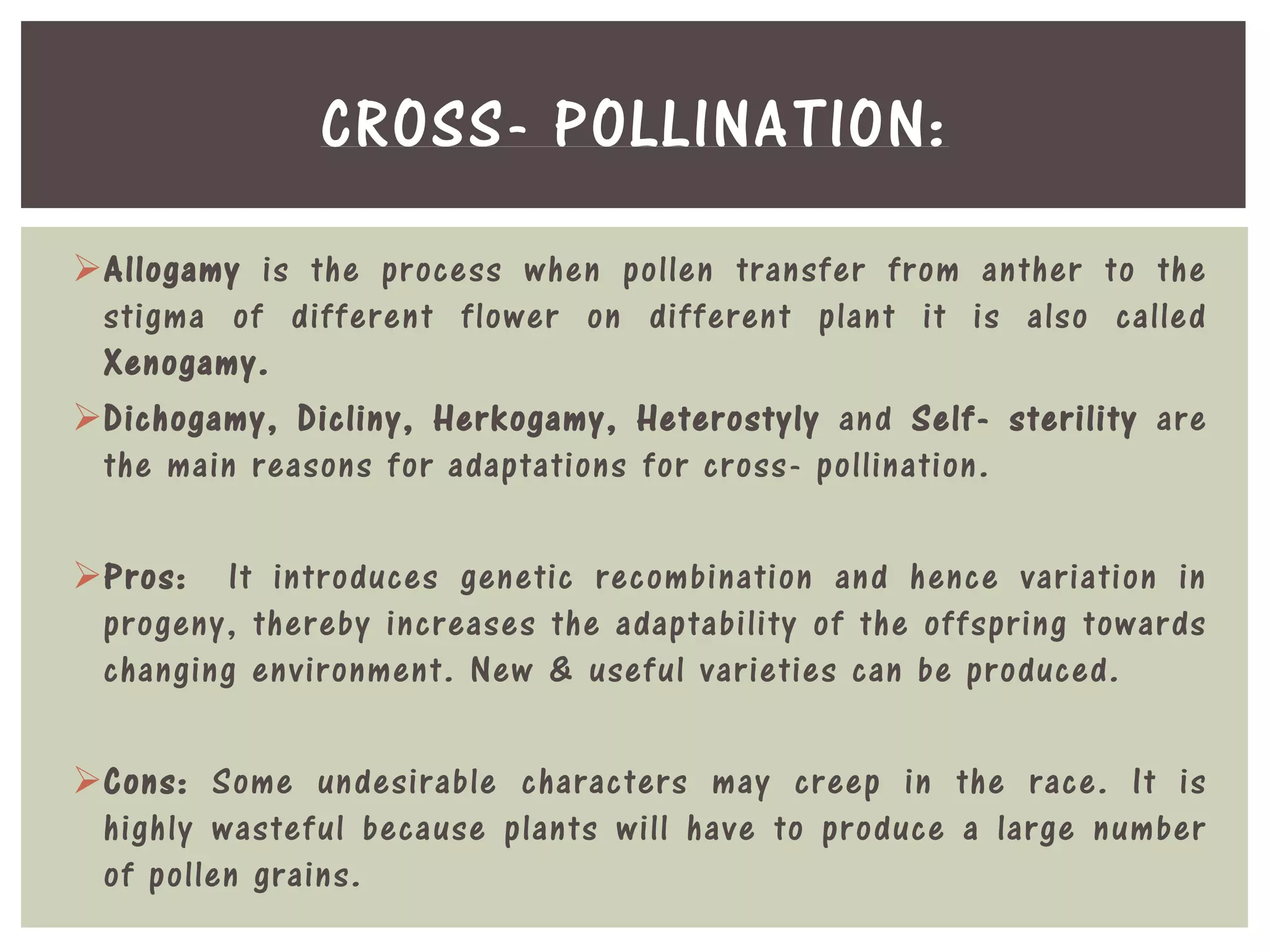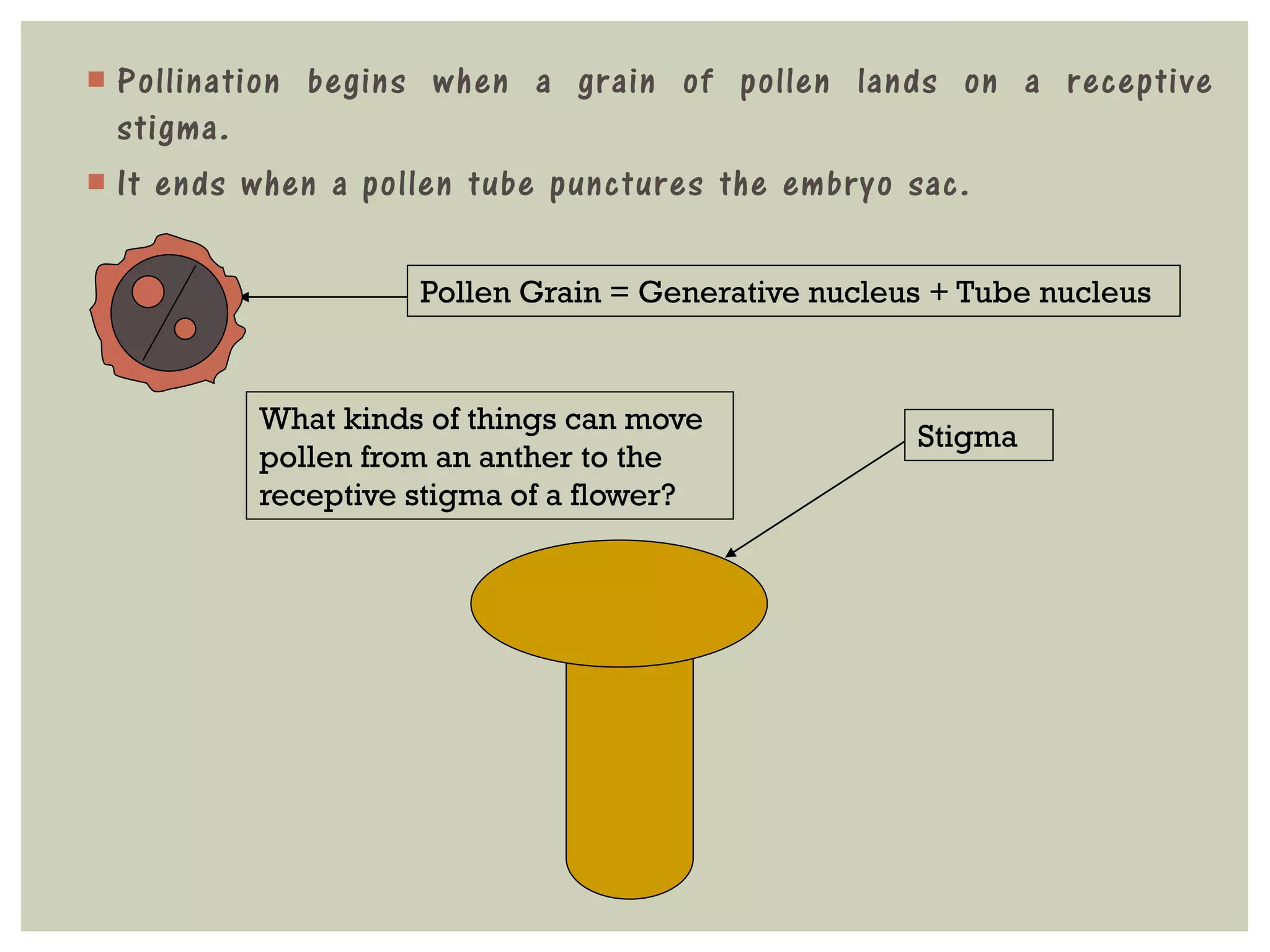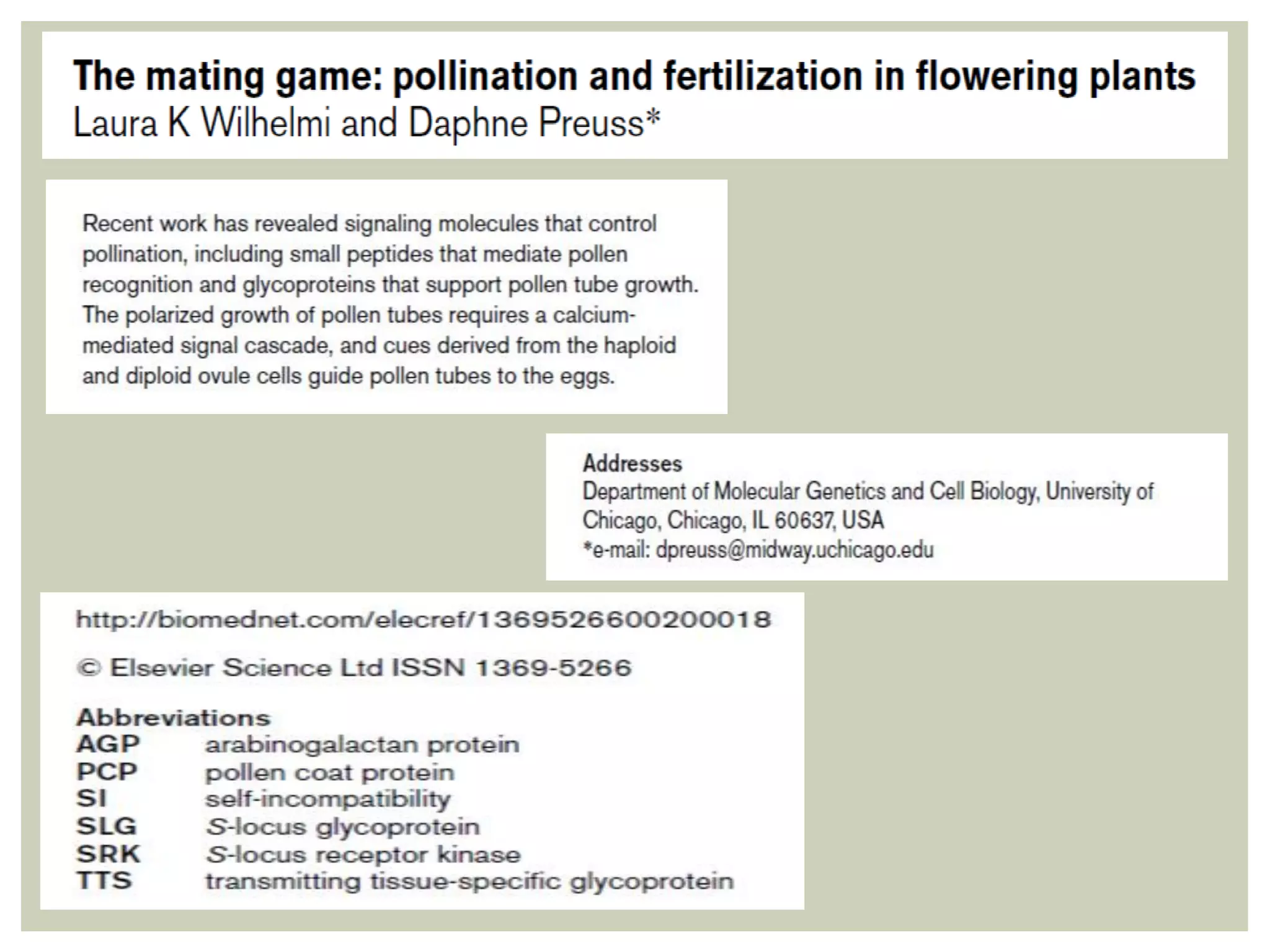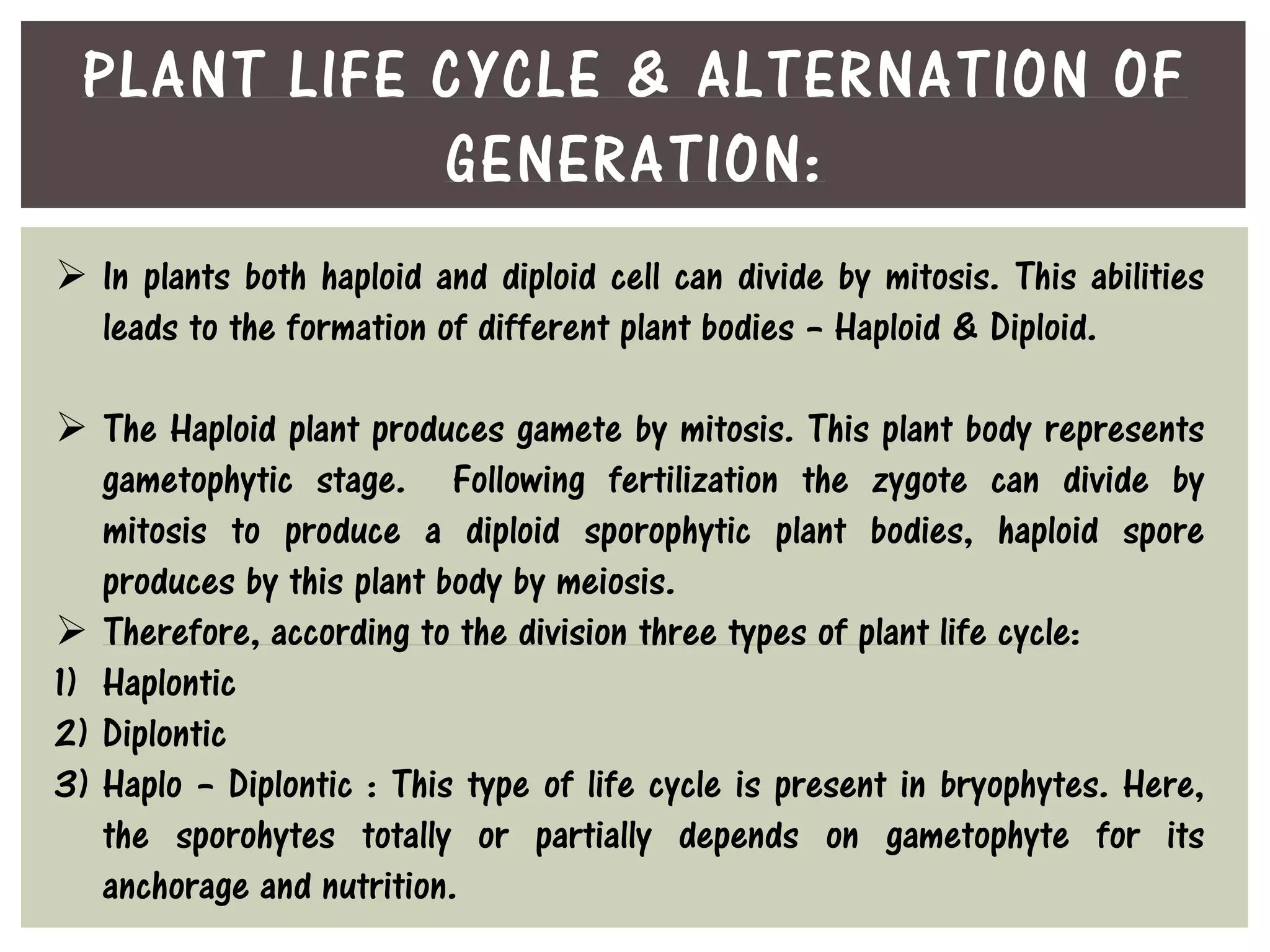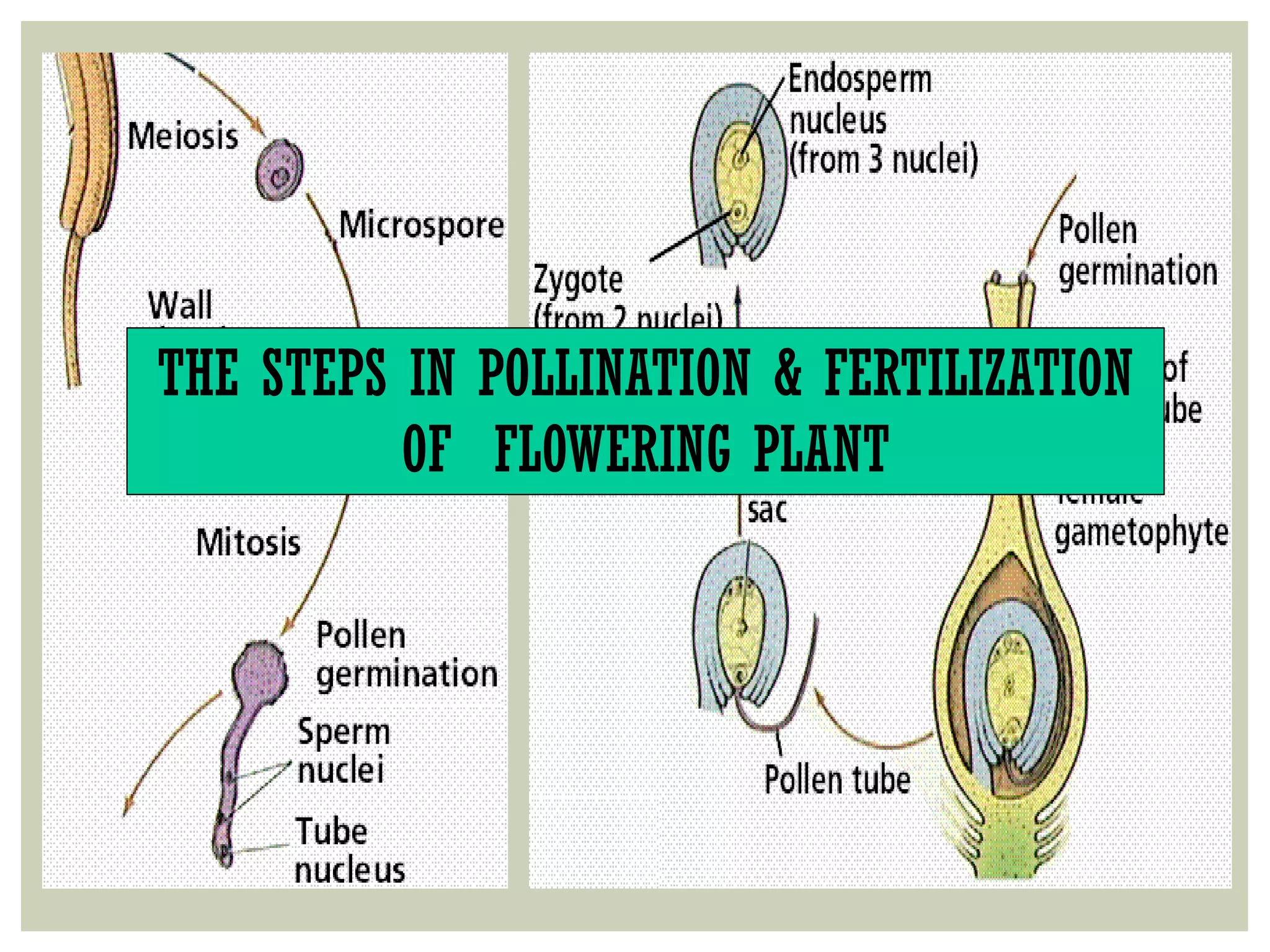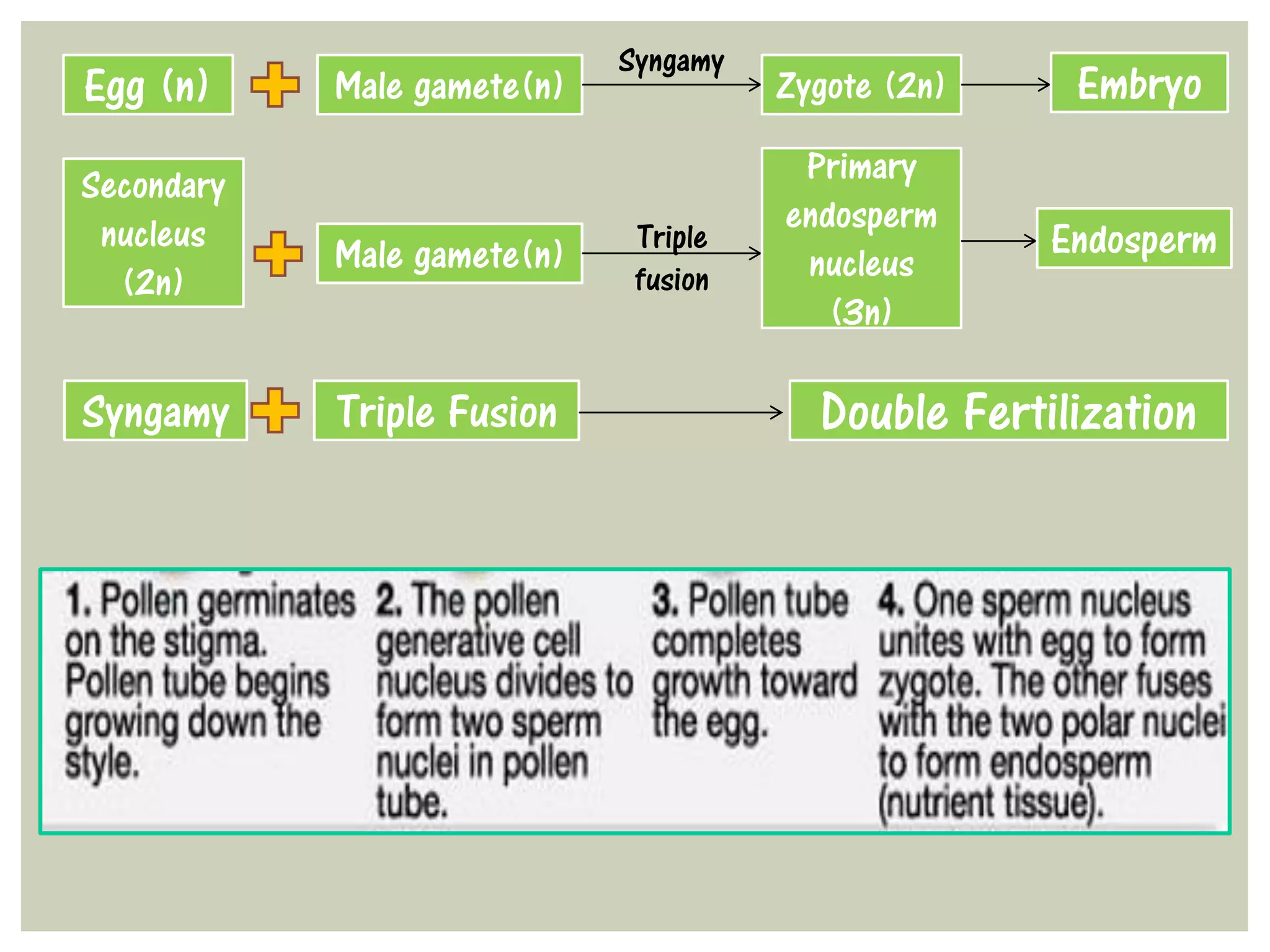Pollination and fertilization in plants is a multi-step process. Pollen is transferred from the anther to the stigma of the flower through pollination, which can be self-pollination or cross-pollination. Upon reaching the stigma, the pollen grain germinates and the pollen tube grows down through the style until it reaches the ovule. Double fertilization then occurs, where one sperm cell fuses with the egg cell to form a zygote, and the other sperm cell fuses with the central cells to form the endosperm. This provides nutrition for the developing embryo and leads to the formation of seeds.








